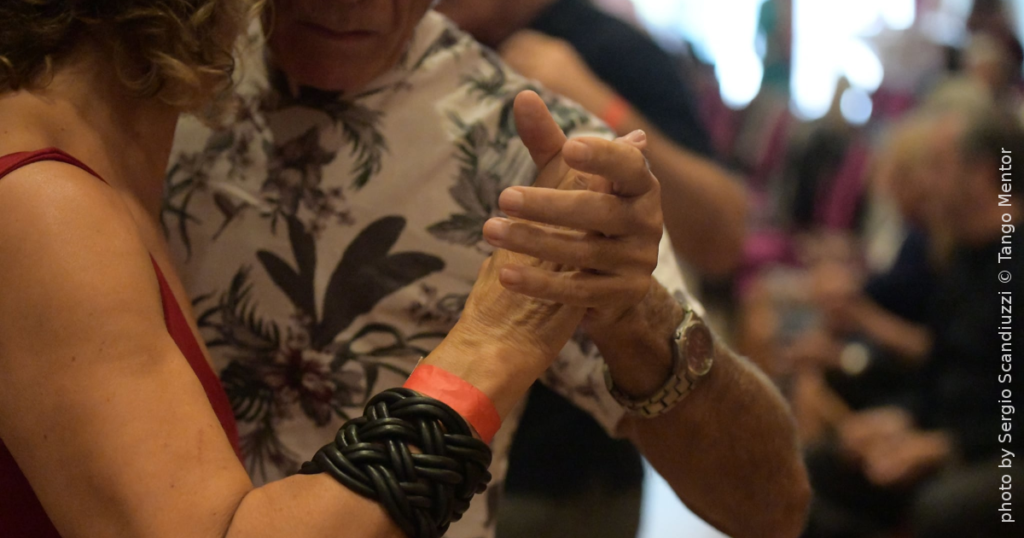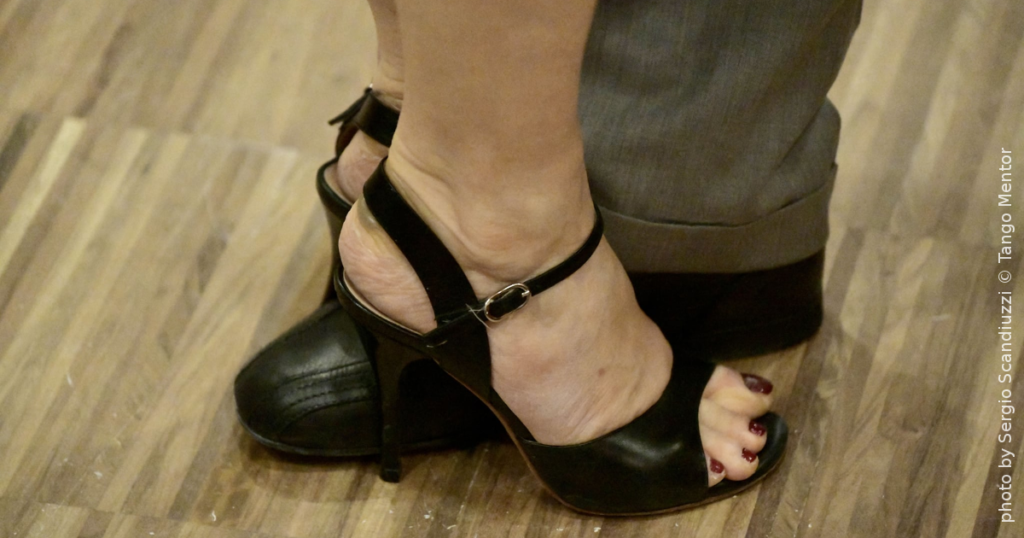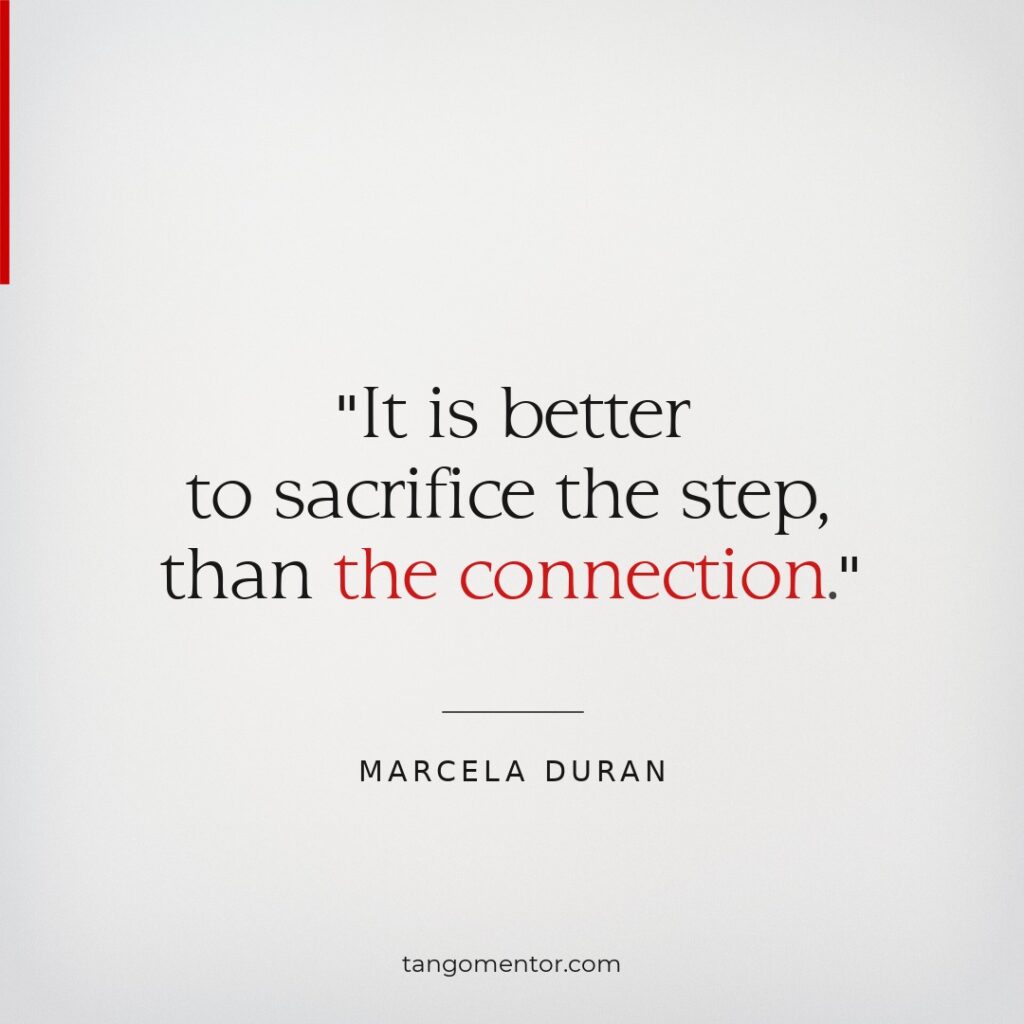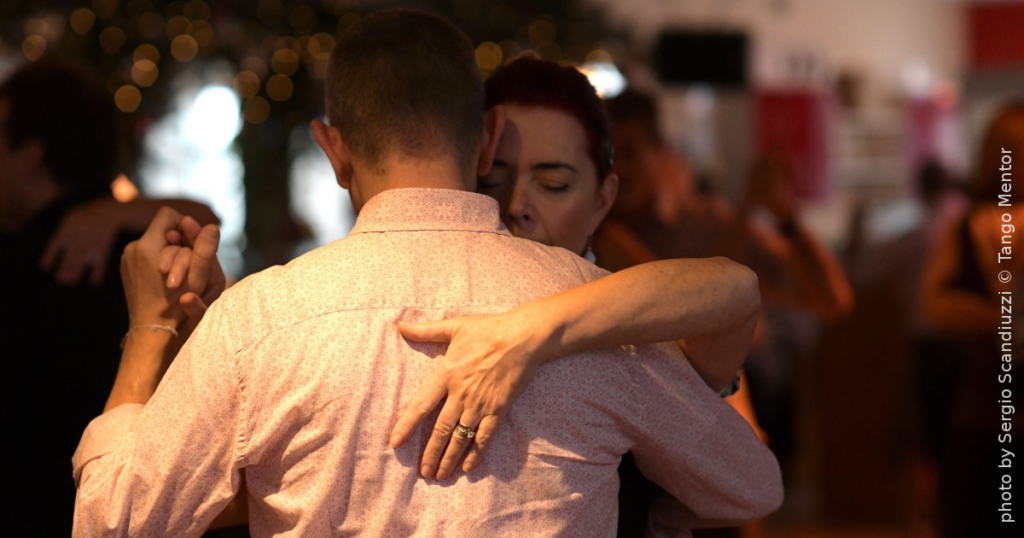
Every great tango dancer breaks the rules. On occasion or often, they decide to go off the rail and do things that are usually not considered recommendable or allowed, and they are not “punished” for that.
I agree that it’s not what makes them good dancers, but there’s something in being bold enough to deviate from the norms that makes them better. Is it the self-confidence? Is it the personality? Is it the act of being different?
Before we get into the details, let’s clear out some things:
1) What I Mean by “Rules”
First, when I say “the rules,” what do I mean by that? Well, the codigos are a part, but it’s not just the codigos I’m talking about here.
There are many widely accepted or even standardized ways of doing things in tango, and they can vary in different communities. People use different techniques when they move, choose different steps, have different tastes in music, appreciate different behavior, dance in different environments, etc.
Like every other micro-culture, tango has its logic and its myths, things that are considered normal, and others that are “outlawed.” These are not universally accepted, but they exist even when dancers are not consciously aware of them. It’s just how society works.
2) The Importance of Understanding and Respecting Rules
Second, I’m not advocating here that rules should not exist or that in order to become a good dancer you should disrespect them. In fact, the opposite is the truth.
If you talk to any of the students in my school, they will tell you that I’m very tough as a teacher, especially when some of them decide to go off the rails and experiment a bit.
I agree it’s quite a rigid approach, and some may say it discourages creativity. Trust me, I have a reason for that: one must first understand and adopt the norms—the outside-the-box thinking comes only after that.
3) The Difference Between Correlation and Causation
The third thing I have to clarify is that the respected dancers are not good dancers because they break the rules; they are despite doing so. There is a difference between correlation and causation.
Breaking the rules is almost always not a good thing and one should try it with extreme caution. The “wild thing” behavior has great potential to backfire and get you into an uncomfortable situation.
For example, you can try inviting without cabeceo, directly approaching and thinking that you will not be rejected, but be prepared to get into the uncomfortable situation of being publicly humbled.
You have to be quite familiar with the subtle games that are being played all around the milonga between the dancers to get away with it. The same is valid for dancing technique: you can try doing some moves in your own way, but only if you’re sure you know how to make it work.
How Great Dancers Get Away with Breaking the Rules?
You have to first make a difference between the appearance and the essence. For example, the milonga etiquette might seem like useless rituals if you don’t understand the reasons for their existence.
Freedom comes with a price: you first have to understand!
The ritual of invitation by cabeceo is meaningless if you don’t do it in a respectful way: it has meaning only if you let others reject you without taking it personally. In fact, I’ve seen people use cabeceo in a horrible way—in a dramatic and obvious way, without subtlety, and noticed by everyone around—putting the lady in an awkward situation of everyone noticing that she is ignoring it.
On the other hand, if you understand that invitation is best if it’s done leaving space to be rejected without an unpleasant situation, you can get away without the ritual of cabeceo itself.
I’m not smart enough to invent a better ritual, but I’ve been invited by ladies with a very smart choice of words that showed respect for personal preference and left space to be rejected without hard feelings.
I think that this “rule-breaking thing” works even better for your dancing technique.
Fortunately, tango is not a standardized dance, and there is no one right way of dancing. People have different body anatomies, different tastes, and different talents: expecting them to dance in the same way is unreasonable and unfair.
In fact, I believe that rule-breaking here enriches the dance, the same way that dialects are an example of the richness of a language (as long as it’s understandable).
Do you like reading my articles? If you do please consider a small contribution to the existence of this blog. I appreciate every contribution, big or small, as much as you feel you gained value from this article.
From my heart to yours!
Ivica
Securely processed by PayPal
Examples of Rule-Breaking
I clearly remember when she approached me after the milonga and politely introduced herself.
“I was looking at you for a couple of tandas, but you seemed not to notice,” she added.
Well, we were at this event in Spain where you could be accepted as a participant only if you were respectful, and she was from France, from a well-mannered and educated community. I’m 100% sure she knew I noticed her mirada, but decided (I have no idea why) not to accept the invitation.
She quickly changed the topic, and I didn’t feel pressured at all. I’m sure she did this not to put me on the spot.
She kind of broke the rules, but the next milonga I invited her—and it was one of the best dances I had at that event. She is still one of my most favorite dancers to this day, and whenever I meet her at an event, I never miss a chance to dance with her.
Another example is Alito, a milonguero who doesn’t dance apilado and doesn’t even maintain a straight axis. In fact, I would say he’s leaning back.
Some of the milongueros prefer to dance in apilado, others prefer keeping the axis on their own, but you rarely see them dancing leaning back. It’s unusual, a kind of maverick move to do so. Yet, Alito gets away with it.
In tango, the best dancers understand and respect the rules, but they also know when and how to break them. This balance of discipline and boldness is what sets them apart.
By mastering the norms first, they gain the confidence and insight needed to deviate in ways that enhance their persona and their dance.



